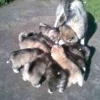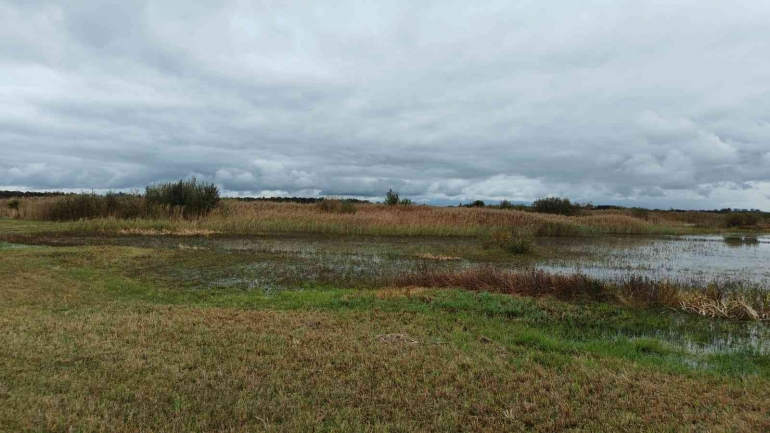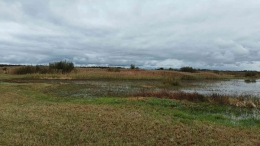Yus Rusila Noor
Yus.noor@gmail.com
It was a morning veiled in mist when we entered the western peat meadow landscape, that quietly living horizon stretching across the Dutch countryside, where the sky seems impossibly wide, and water becomes both memory and destiny. In this vast, low-lying land, the air itself feels like a negotiation between soil and sky. Beneath our feet lay peat, centuries of accumulated life, now slowly releasing carbon into the atmosphere. Around us, cows grazed on damp meadows, canals traced delicate veins of water, and distant windmills stood as sentinels of a long conversation between humans and wetlands.
The Netherlands has always been a country built upon the art of coexistence, between water and land, between human ambition and ecological constraint. Yet, even in this land of mastery over water, the western peat meadows (veengebieden) tell a story of limits: subsidence caused by drainage for agriculture, biodiversity loss, and the invisible crisis of carbon emissions from drying peat. What once sustained Dutch prosperity now challenges it.
The living laboratory of a landscape
Our visit to this region was more than a field trip, it was an invitation to see landscape as a living system, not a patchwork of ownerships and functions. The Western Peat Meadow Landscape stretches across the provinces of Utrecht, Zuid-Holland, and North-Holland, a mosaic of pastures, ditches, villages, and heritage farms. It is also a complex governance arena where farmers, conservationists, and water boards must continuously negotiate coexistence.
Here, initiatives such as Commonland, Wij.land, and Natuurmonumenten have become laboratories for the "4 Returns Approach", a regenerative framework that seeks to restore four fundamental outcomes: inspiration, social capital, natural capital, and financial return (Commonland, 2021). It is a deceptively simple yet deeply systemic idea, that real restoration must heal landscapes, communities, and economies at once.
Walking through the meadows with local practitioners, one senses that restoration is not an act of reversing time, but of reimagining it. Ditches are being re-wetted to slow oxidation; farmers experiment with paludiculture, cultivating wet-loving crops such as cattails and reed; while cooperatives explore new business models based on carbon credits and ecosystem services. Beneath the pragmatic tone of Dutch planning lies a quiet, moral experiment, can a landscape once engineered for drainage now be re-engineered for resilience?
Between water and will
The Dutch approach to the peat meadow crisis reflects centuries of negotiation with water --- yet it also reveals a new humility. "Working with nature" is no longer a poetic phrase; it is a pragmatic necessity. The sight of restored peatlands surrounded by active farms evokes both optimism and tension, can the same land feed the economy and cool the climate?
At the heart of this question lies the landscape approach, an integrative way of seeing, managing, and governing land that transcends sectors and boundaries. It is as much about people as about peat. Through participatory design, shared governance, and multi-level collaboration, these initiatives show that transition requires not only science and technology but also empathy and trust.

Reflections beyond the horizon
For Wetlands International and its partners, this visit is more than an exchange of knowledge. It is a mirror reflecting our own journey, from the deltas of Indonesia to the marshes of the Netherlands. Though geographically distant, both share a destiny written in water. The western peat meadows whisper lessons for tropical peatlands, that sustainable futures are built not by resisting change, but by reshaping relationships, between people and place, economy and ecology.
Perhaps that is the quiet beauty of these meadows, they invite us to slow down, to listen to landscapes as archives of memory and laboratories of hope. Restoration, in the end, is not about turning back time, but about learning how to inhabit the future, wisely, humbly, and together.
Follow Instagram @kompasianacom juga Tiktok @kompasiana biar nggak ketinggalan event seru komunitas dan tips dapat cuan dari Kompasiana. Baca juga cerita inspiratif langsung dari smartphone kamu dengan bergabung di WhatsApp Channel Kompasiana di SINI








